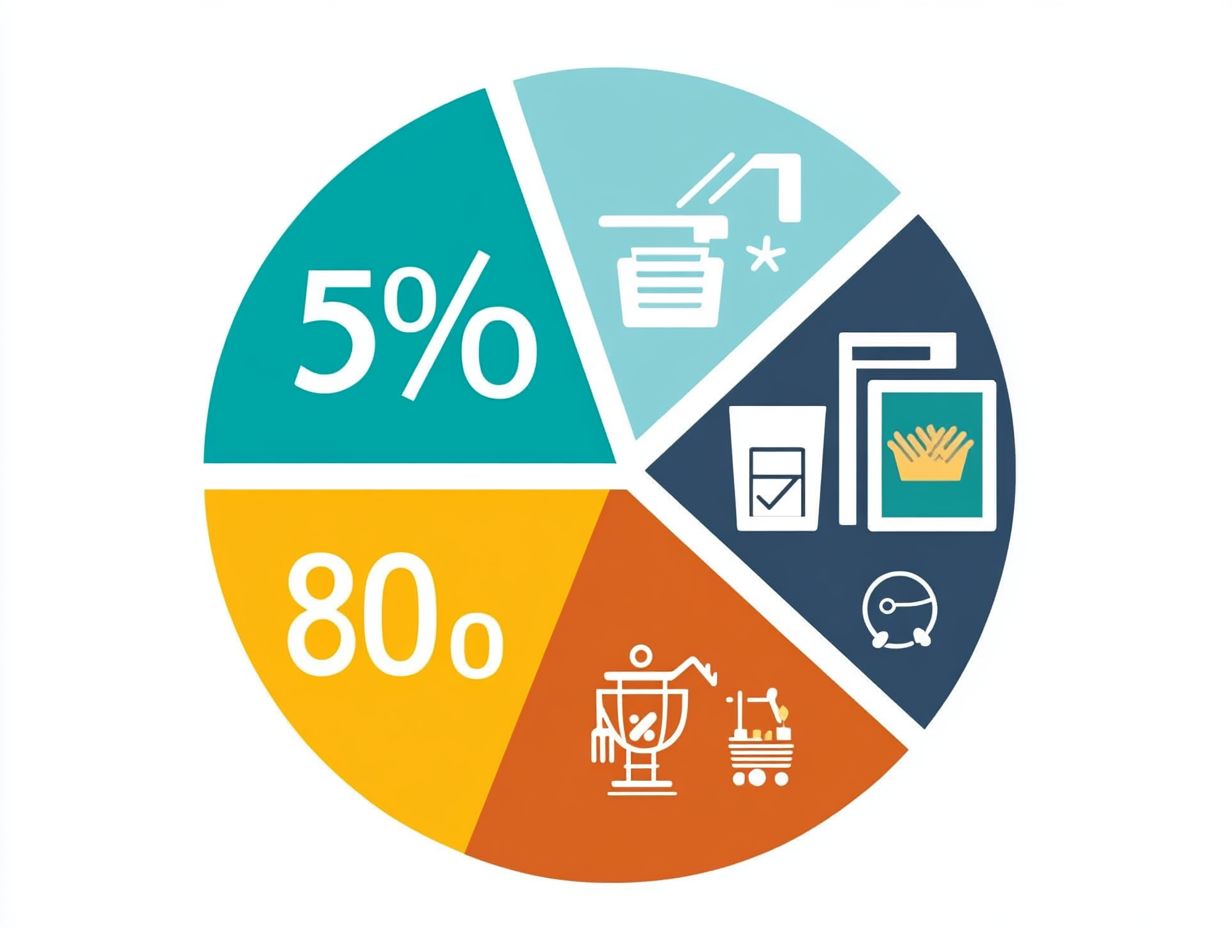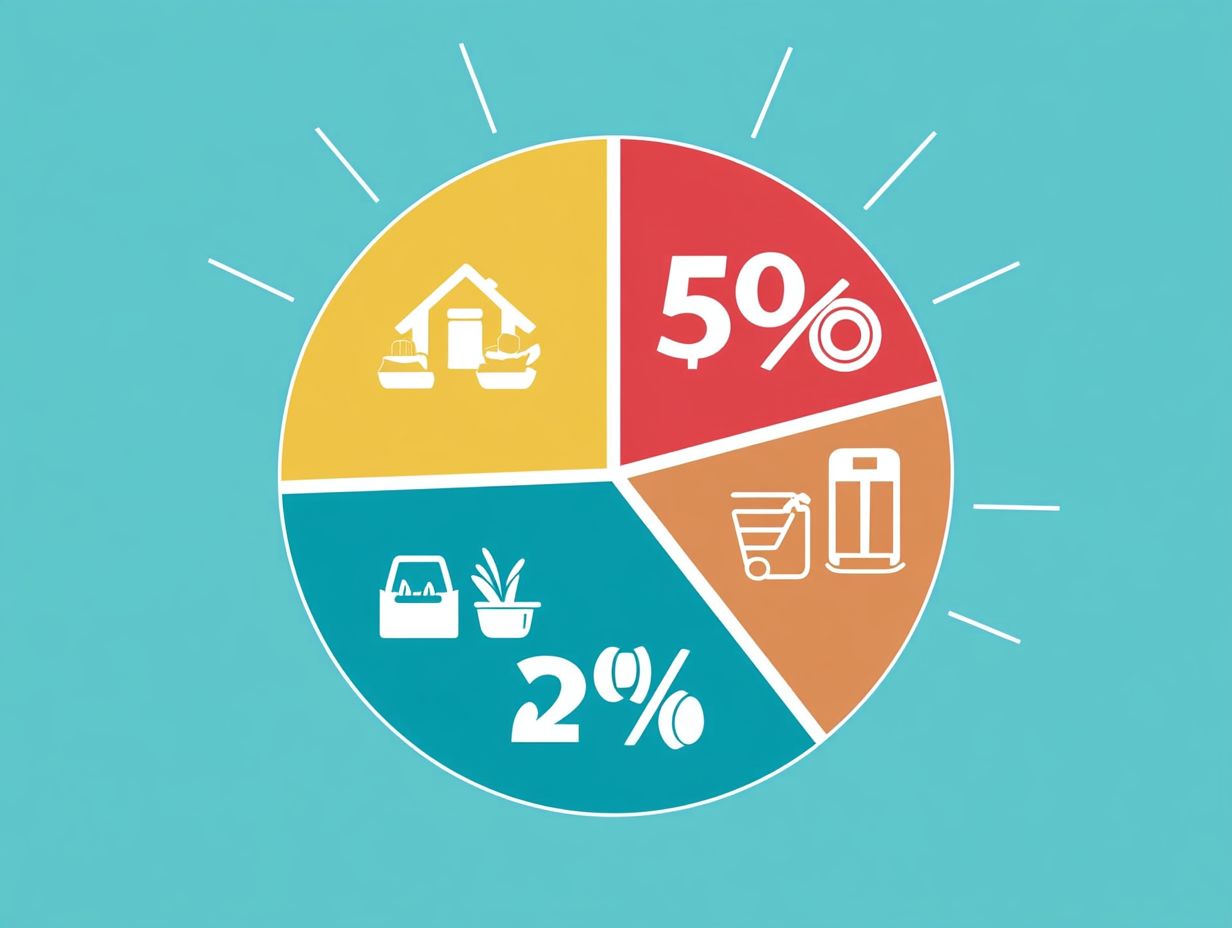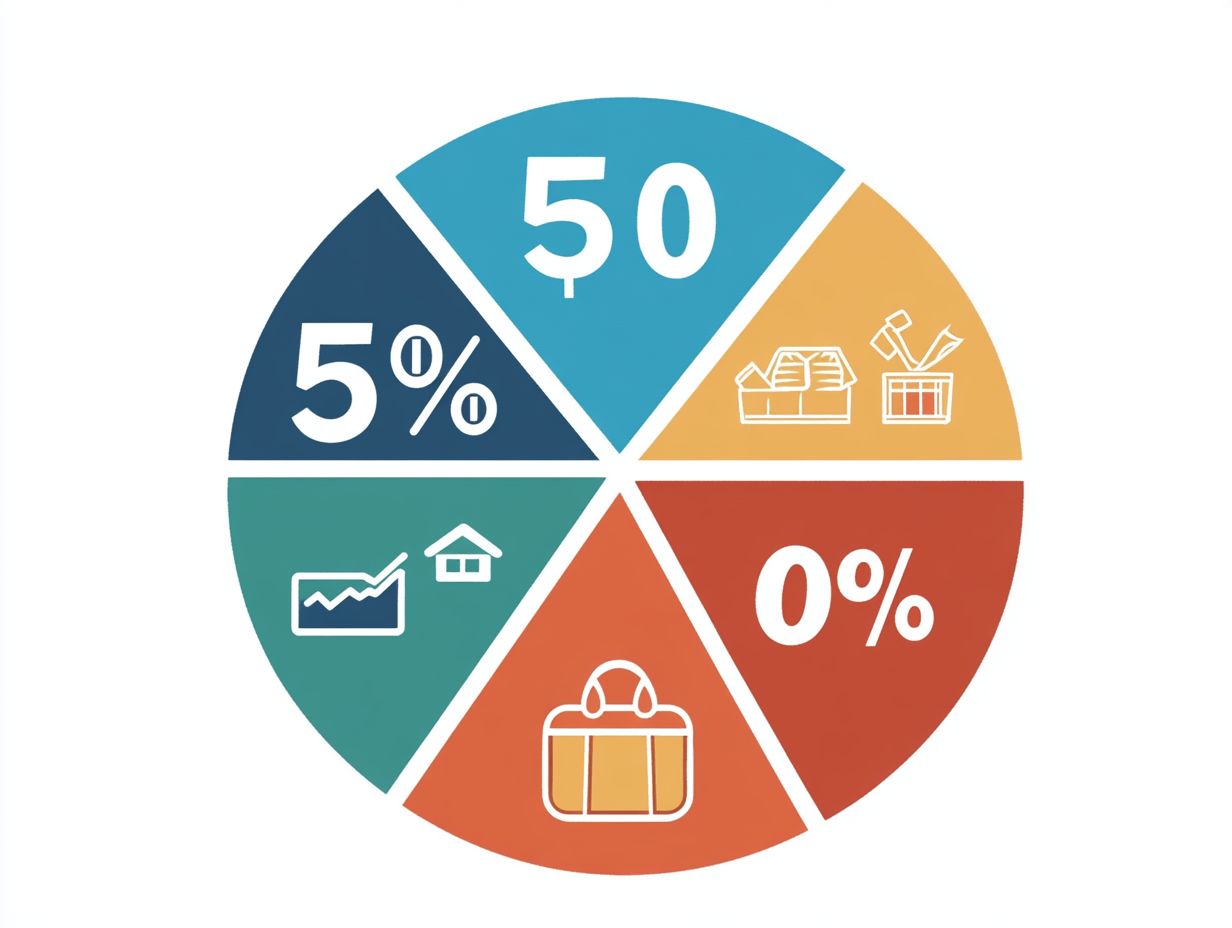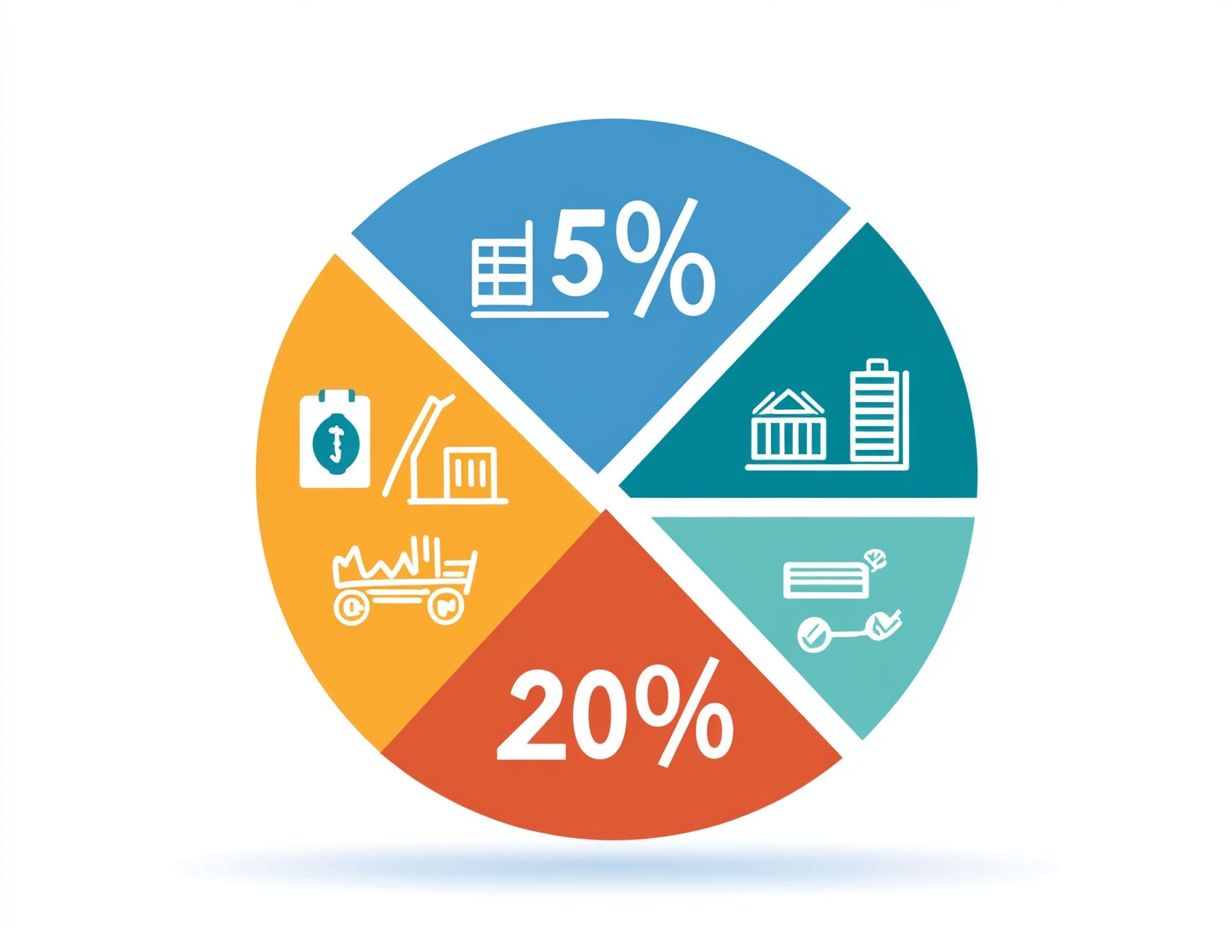Mastering the 50/30/20 Rule for Budgeting
The 50/30/20 Rule is a simple and effective way to budget. It can significantly improve your financial health.
This guide delves into the intricacies of the rule, showcasing its advantages and how it can simplify your spending habits. You ll discover a comprehensive, step-by-step approach to implementation, along with tailored tips to adapt the rule to your specific financial landscape.
Common obstacles will be tackled head-on. You ll gain insights into long-term strategies for achieving sustainable financial success.
Explore this straightforward framework and empower yourself to take command of your finances!
Contents
- Key Takeaways:
- Understanding the 50/30/20 Rule
- Benefits of Using the 50/30/20 Rule
- Implementing the 50/30/20 Rule
- Adjusting the Rule to Fit Your Needs
- Troubleshooting Common Challenges
- Unlock Your Financial Future with Smart Strategies!
- Frequently Asked Questions
- How can the 50/30/20 rule change your budgeting game?
- Why is mastering the 50/30/20 rule essential for your financial health?
- How do I determine my needs, wants, and savings for the 50/30/20 rule?
- Can I adjust the 50/30/20 rule to fit my specific financial situation?
- How can I track my spending to ensure I am following the 50/30/20 rule?
- What should I do if I am struggling to stick to the 50/30/20 rule?
Key Takeaways:

Understanding the 50/30/20 Rule
The 50/30/20 rule is a budgeting strategy that gained prominence through Senator Elizabeth Warren and her daughter, Amelia Warren Tyagi, in their insightful book, “All Your Worth: The Ultimate Lifetime Money Plan.”
This elegant yet straightforward framework enables you to allocate your income into three essential categories: 50% for needs, 30% for wants, and 20% for savings. By following this structure, you can enhance your financial decision-making and elevate your household finances.
The rule’s purpose is to strike a harmonious balance between enjoying life and securing your financial future. It ensures that your essential expenses are met while also setting aside funds for savings and discretionary spending.
What is the 50/30/20 Rule?
The 50/30/20 rule is your go-to budgeting strategy, elegantly dividing your after-tax income into three essential categories: 50% for needs, 30% for wants, and 20% for savings.
By adopting this framework, you can achieve a well-rounded approach to managing your finances. The ‘needs’ category covers critical living expenses think mortgage or rent, groceries, utility bills, and health insurance. These are the essentials that keep your day-to-day life running smoothly.
The ‘wants’ category invites a touch of indulgence, encompassing non-essential spending like dining out, entertainment subscriptions, and hobbies. It s all about adding a sprinkle of enjoyment to your life.
And let s not forget the ‘savings’ part, which encourages you to set aside money for unexpected expenses or for when you stop working. This paves the way for long-term financial security.
This straightforward yet powerful rule offers clarity and keeps your finances in check, enabling you to navigate your monthly budget with absolute confidence.
Benefits of Using the 50/30/20 Rule
Using the 50/30/20 rule offers many benefits, positioning it as a favored choice for those seeking enhanced financial planning and mastery over their household budgets.
This budgeting strategy makes it easier to track your expenses and fosters a disciplined attitude towards personal finance.
As a result, you ll find yourself making wiser money-management choices that not only diminish your debt but also amplify your savings. By sticking to this rule, you can cultivate a clearer insight into your average household budget.
Don t wait! Begin budgeting today with the 50/30/20 Rule and watch your financial confidence grow.
How it Can Improve Your Finances
Implementing the 50/30/20 rule can transform your financial landscape, leading to wiser financial decisions and cultivating savings habits that resonate with your long-term aspirations.
By designating 50% of your income for needs, 30% for wants, and 20% for savings and debt repayment, you can establish a balanced budget that promotes healthy spending. This structured approach not only helps you build a solid savings for unexpected expenses typically advised to cover three to six months of living expenses but also boosts your retirement savings through regular contributions to your retirement accounts.
A recent study revealed that households embracing this budgeting strategy experienced a remarkable 35% increase in their emergency funds within just the first year. They gained newfound confidence in their spending decisions, secure in the knowledge that they had a financial cushion in place. This empowerment allows you to relish life fully while remaining prepared for any unexpected expenses that may arise.
Implementing the 50/30/20 Rule

Start using the 50/30/20 rule today for a smarter way to manage your money! It demands a structured approach that begins with identifying your total income, categorizing your expenses, and using budgeting tools to keep you on course toward your financial objectives.
To allocate your funds effectively under this rule, it’s essential to first determine your after-tax income (the amount you take home after taxes), which serves as the cornerstone of your budgeting efforts. By diligently tracking your expenses and making adjustments as needed, you can maintain alignment with the 50/30/20 framework, ultimately enhancing your household finances and paving the way for a secure financial future.
Step-by-Step Guide
Follow this easy guide to take control of your financial future!
By breaking down your income and categorizing your expenses, you’ll not only gain a clearer picture of your financial landscape but also enable yourself to make informed choices. Begin by calculating your total monthly income, including salaries and any side earnings. Then, sort your expenses into three distinct categories:
- Needs: Covering essentials like housing and groceries.
- Wants: Encompassing discretionary spending, such as entertainment.
- Savings: Focused on future goals and emergencies.
Using budgeting apps or spreadsheets can simplify this process significantly, providing an organized way to track your progress. Think about setting up automatic payments for fixed monthly expenses to ensure you stay on top of your financial responsibilities.
To keep things effective, remember to review and adjust your budget regularly, adapting it to reflect any changes in your income or expenses.
Adjusting the Rule to Fit Your Needs
Adjust the 50/30/20 rule now to fit your unique financial situation for the best results! Your personal situation will guide how you spend your money.
While the standard breakdown of 50% for needs, 30% for wants, and 20% for savings provides a solid foundation, personal finance often demands a customized approach. Factors such as income levels, financial goals, and varying expense categories come into play.
By tailoring the 50/30/20 rule, you enable more effective budgeting and pave a clearer path toward achieving financial stability and confidence.
Customizing for Your Financial Situation
Tailor the 50/30/20 rule to fit your financial needs. For instance, if you re living in an urban area with high living costs, you may find it necessary to allocate a larger portion of your budget to essentials like housing and transportation.
If you have student loans or credit card debt, focus more on paying those off. It s also essential to factor in the need for savings for unexpected expenses; an unexpected expense can easily throw an unprepared budget off track.
By evaluating these elements and recalibrating your percentages, you can craft a financial plan that not only addresses your immediate needs but also sets you on a path toward achieving your long-term aspirations.
Troubleshooting Common Challenges
Navigating the 50/30/20 rule can certainly present some common challenges that may require a bit of troubleshooting to keep your budgeting on track and your financial planning sound.
You might find it difficult to stick to your budget due to unexpected expenses, fluctuations in income, or shifts in lifestyle. By identifying these challenges ahead of time, you can make necessary adjustments to your budgeting strategy with ease.
This way, you can keep your financial decisions aligned with your personal finance goals and bills, whether it s tackling debt repayment or building up your emergency savings.
Overcoming Obstacles to Budgeting

Overcoming obstacles to budgeting is vital for successfully following the 50/30/20 rule and achieving your long-term financial goals.
Navigating budgeting challenges may seem daunting, but by implementing practical strategies, you can make a significant difference. Many people struggle with managing discretionary spending or keeping up with debt repayments, which can derail even the most meticulously crafted budgets.
To counter this, it s essential to establish clear spending limits and prioritize your essential expenses. Utilizing budgeting apps can simplify tracking your expenses and help you maintain accountability.
You might also find it beneficial to adjust your budget as your financial situation evolves, ensuring you remain on the path to financial stability while maintaining discipline in your spending habits. This is especially crucial for making informed financial decisions.
Unlock Your Financial Future with Smart Strategies!
Long-term strategies for financial success demand your commitment to the principles of the 50/30/20 rule. By embracing this framework, you can take charge of your household finances while crafting a secure future.
It s about striking the right balance and ensuring that every dollar serves a purpose in your financial journey.
Building on the 50/30/20 Rule for Sustainable Finances
Building on the 50/30/20 rule is crucial if you want to create sustainable finances that support your long-term goals and elevate your money-management practices.
By incorporating additional budgeting techniques, you can refine your financial approach even further, crafting a more realistic roadmap to achieving monetary stability. For example, consider using cash stuffing; this method allows you to physically set aside cash for different spending categories, fostering mindful expenditure while helping you visualize your budgetary limits.
Prioritizing setting aside money for emergencies enables you to safeguard against unexpected expenses, creating a safety net that enhances your overall financial health. These combined practices promote disciplined spending and saving, ultimately paving the way for enriched financial literacy and equipping you to navigate economic uncertainties with confidence.
Frequently Asked Questions
How can the 50/30/20 rule change your budgeting game?
The 50/30/20 rule for budgeting is a guideline that suggests allocating 50% of your after-tax income towards needs, 30% towards wants, and 20% towards savings or debt repayment.
Why is mastering the 50/30/20 rule essential for your financial health?

Mastering this rule can help you achieve financial stability and balance your spending and saving habits. It can also prevent overspending and help you reach your financial goals.
How do I determine my needs, wants, and savings for the 50/30/20 rule?
Needs are essential expenses such as rent, groceries, and utilities. Wants are non-essential expenses like dining out or shopping. Savings can include emergency funds, retirement savings, and debt repayment. It’s important to accurately categorize your expenses to effectively follow the rule.
Let s get started on your journey to financial health!
Can I adjust the 50/30/20 rule to fit my specific financial situation?
Yes! The 50/30/20 rule is flexible. You can modify it to suit your needs.
If you have a lot of debt, consider setting aside more for savings and paying off debt. This way, you can reduce unnecessary spending on wants.
How can I track my spending to ensure I am following the 50/30/20 rule?
Use budgeting apps or simple spreadsheets to track your expenses. This helps you see where your money goes.
Regular reviews are key to keeping your budget in shape! Adjust as needed to stay on track with the 50/30/20 rule.
What should I do if I am struggling to stick to the 50/30/20 rule?
If you’re finding it tough, take a fresh look at your expenses. Look for areas to cut back on non-essential items.
You can also consult a financial advisor for tailored advice. They can help guide you through your financial challenges!






